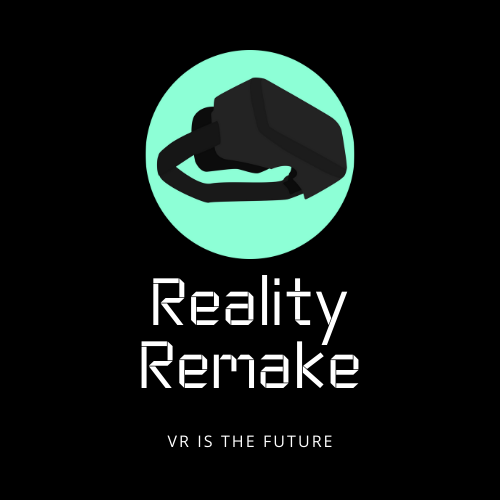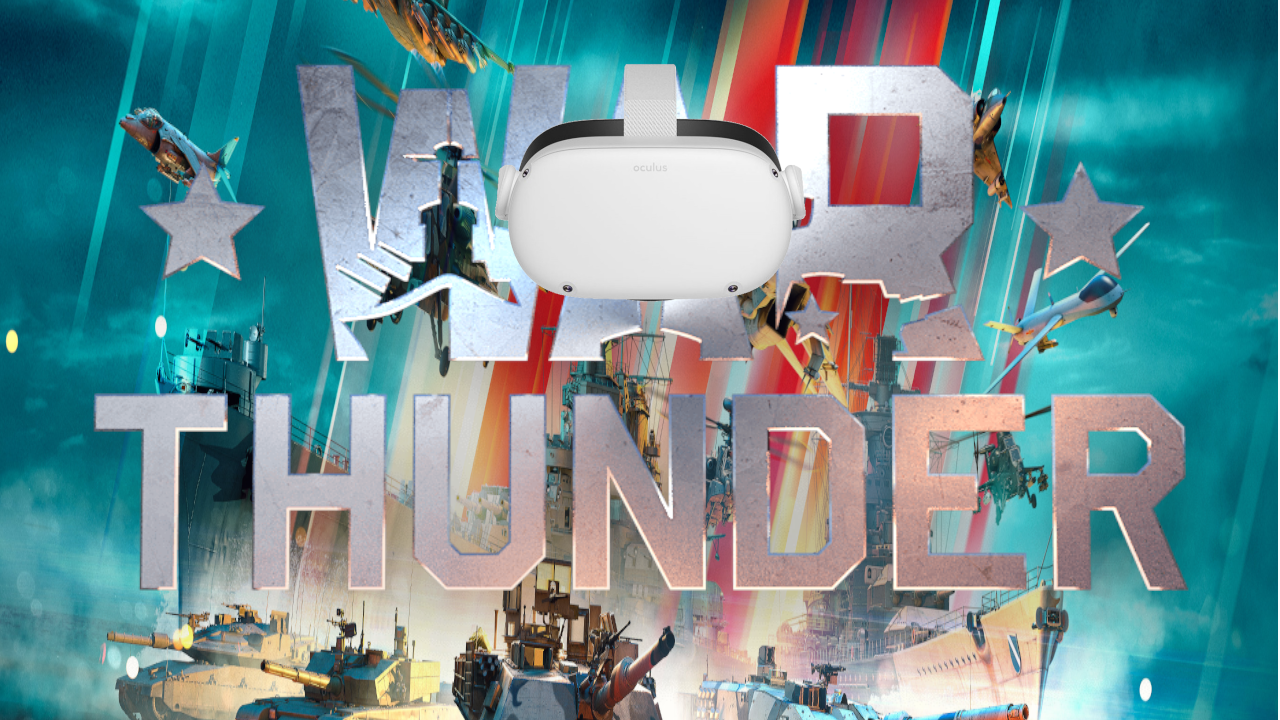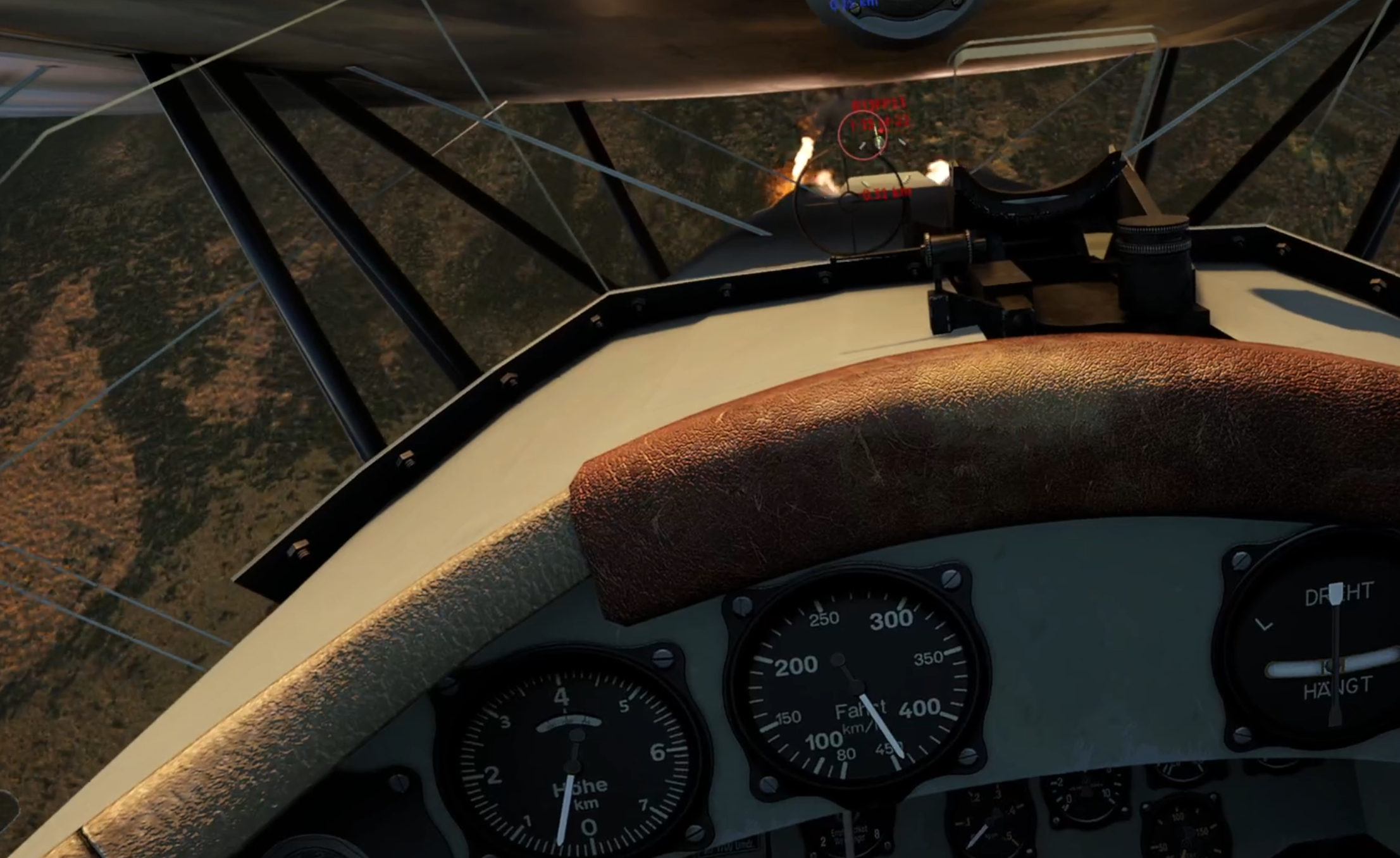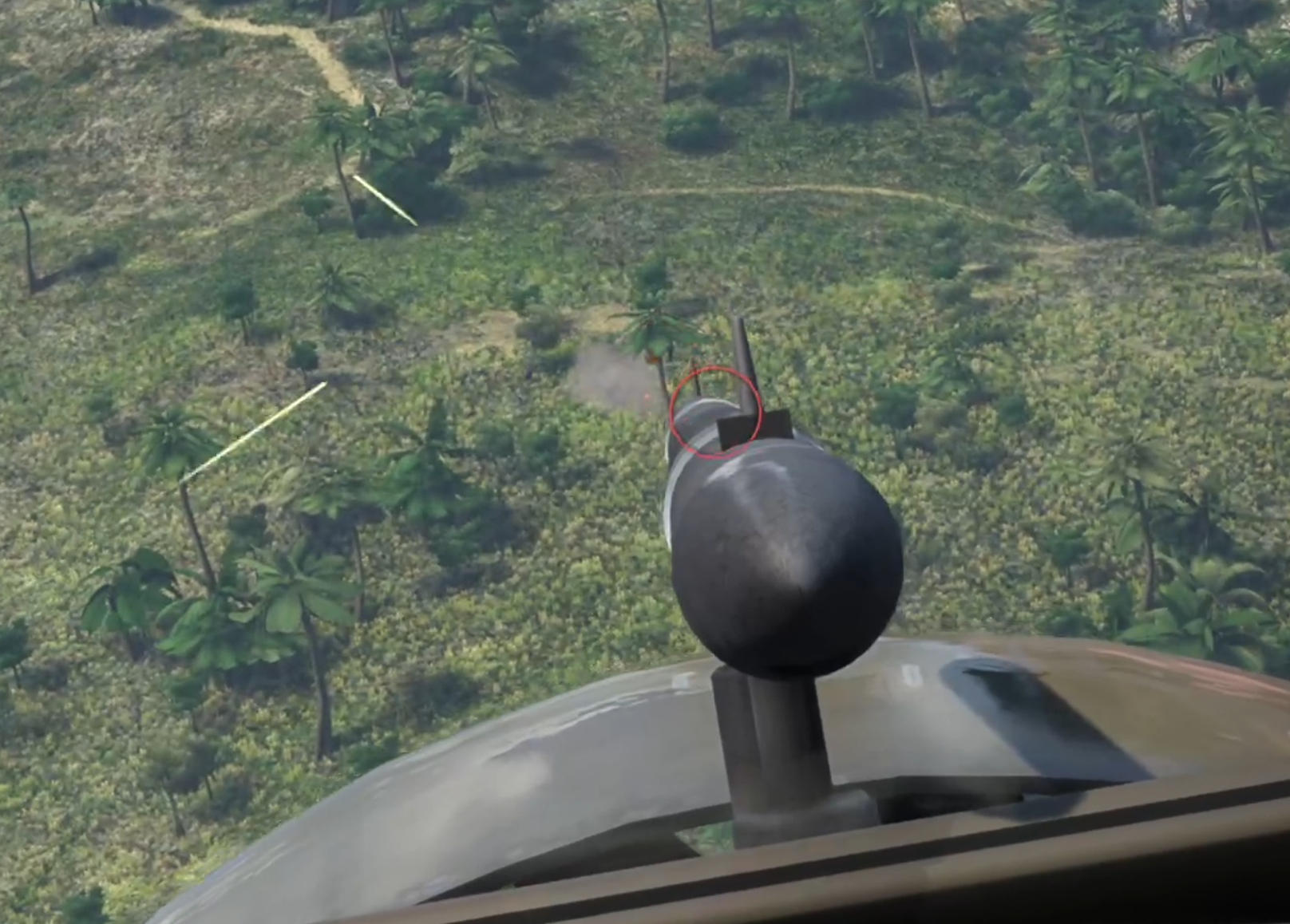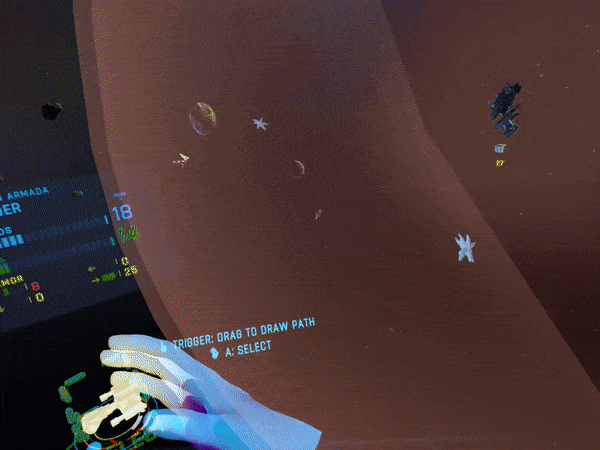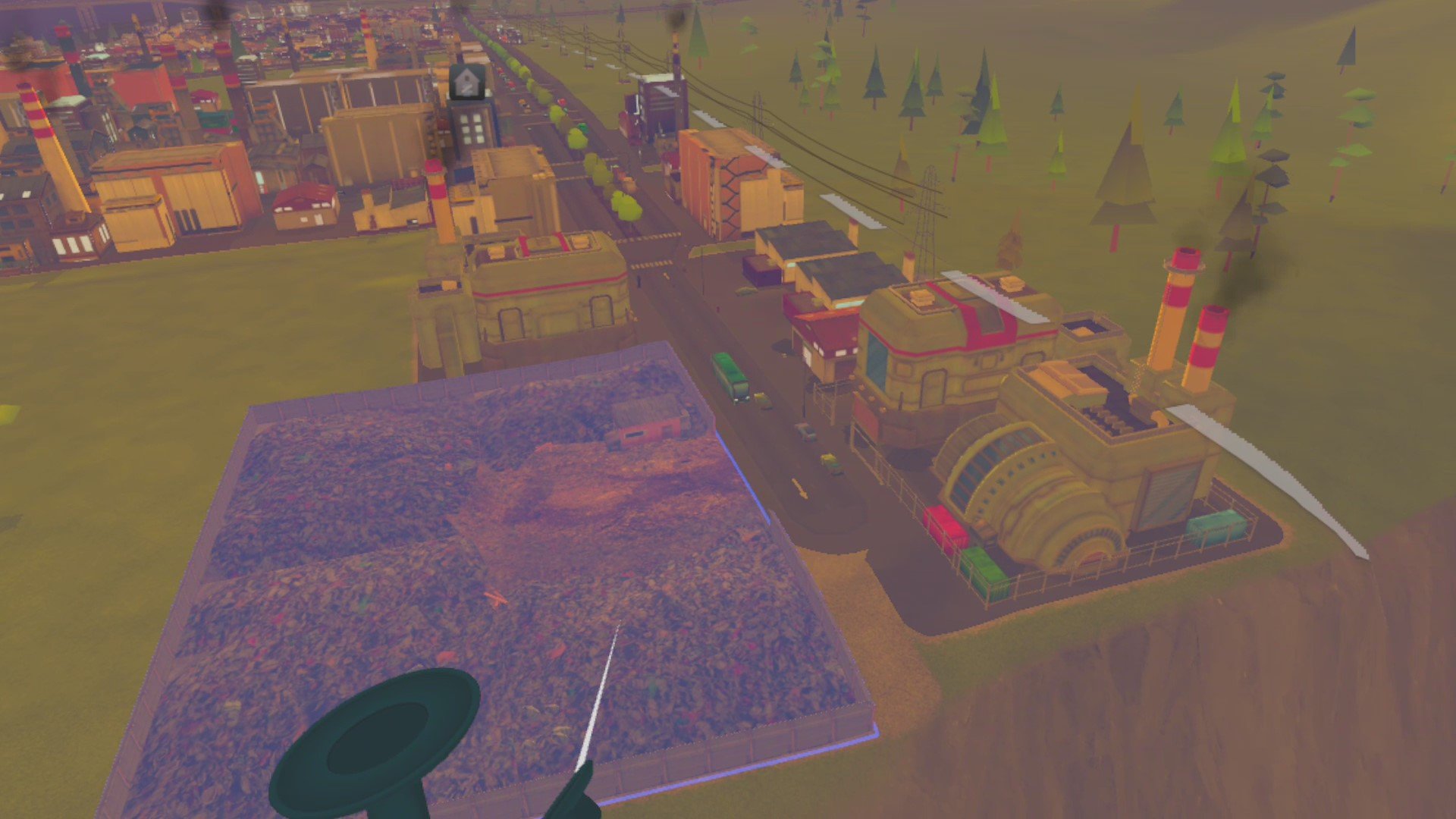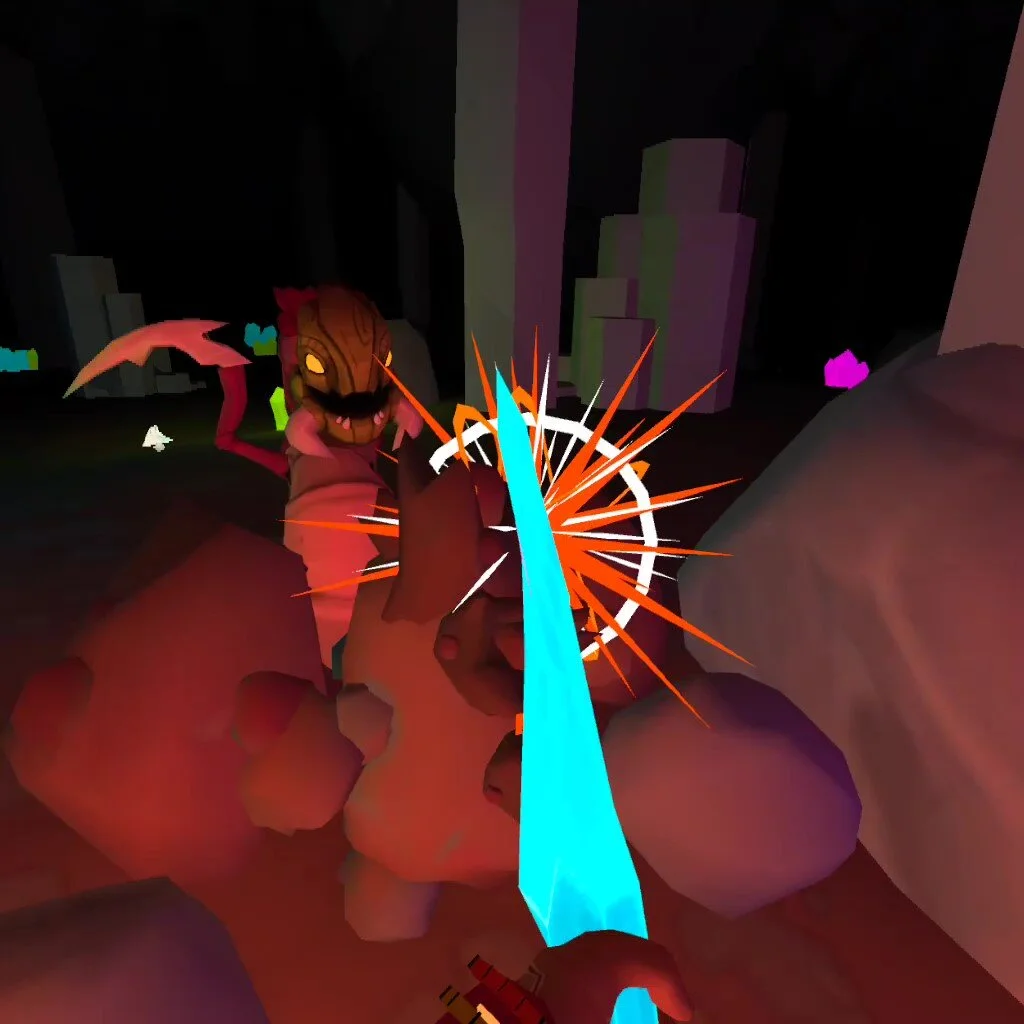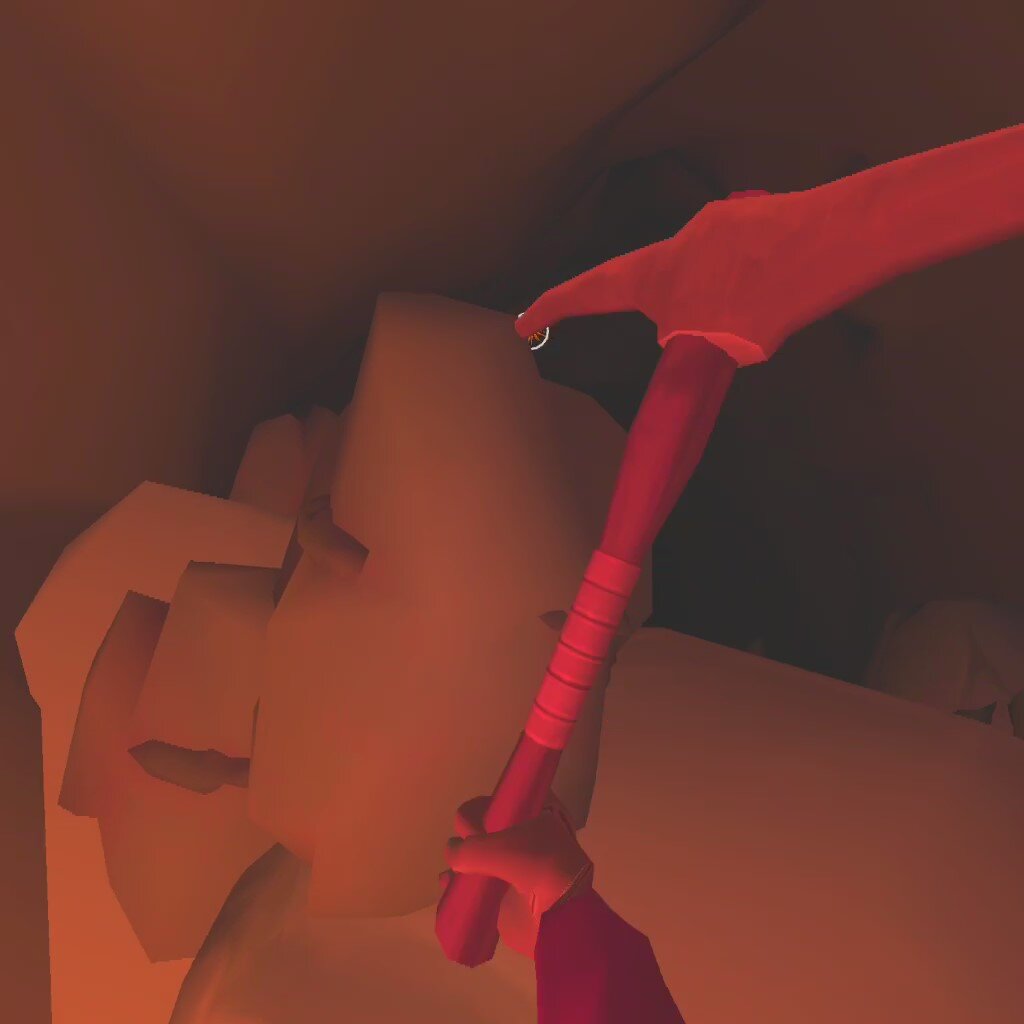War Thunder VR Review and Setup Guide
Today we’re going to be diving into a really well known PC game, War Thunder, and finding out if playing it in VR makes it any better. War Thunder is a combination Tank fighting, air combat, and ship battle simulator. It’s got a ton of vehicles to drive and realistic damage and penetration models, not to mention a huge community. Most importantly it’s got VR support, and that doesn’t get talked about as often as you’d think with a game this huge. So I couldn’t help but wonder, is War Thunder VR any better than flat screen War Thunder? Let’s find out.
Today we’re going to be diving into a really well known PC game, War Thunder, and finding out if playing it in VR makes it any better. War Thunder is a combination Tank fighting, air combat, and ship battle simulator. It’s got a ton of vehicles to drive and realistic damage and penetration models, not to mention a huge community. Most importantly it’s got VR support, and that doesn’t get talked about as often as you’d think with a game this huge. So I couldn’t help but wonder, is War Thunder VR any better than flat screen War Thunder?
Well it… kind of is. Land Battles are a little better in VR, and sea Battles aren’t enhanced by adding Virtual Reality at all. Air Battles, however, are fantastic in VR. Despite a little jank, Virtual Reality makes fighting in the air much better. If you’re curious on how to set up War Thunder on the PC, or get a few more details on just why VR can make some gamemodes of War Thunder better, read on.
VR Setup
If you want to get to the actual review, skip ahead to the “Land Battles” Section below. Here we’re going to go over how to play War Thunder in VR so that it’s comfortable and looks as nice as we can get it. After that I’ll also talk about a little background on the game in case you’re totally unfamiliar with it. Feel free to come back here if combining War Thunder and VR still sounds interesting after the review and you’d like to set it up for yourself.
First let’s talk a little about how we’re gonna do this. I’m not a massive War Thunder fan. You’ll see from the vehicles that I’ll be using that I’ve played it a little before. I’m not a master War Thunder player by any means, but I’ve played it a bit before on flat screen and know my way around the game.
As for my setup, I’ll be using Meta Air Link to stream the game to my Oculus Quest 2. I’ll also be sitting in a chair right in front of my mouse and keyboard, so a setup using an Oculus Link Cable is just as viable to play War Thunder VR. This setup should work for any VR Headset or HMD that you have.
The first thing I’ll say about VR War Thunder is that you should get rid of any notion of using your VR controllers to play it. It is practically impossible to control your vehicle in land, air, or sea with them. You have to use a mouse and keyboard or joystick to control the game. Not only are there a ton of buttons you’ll need to have access to, way more than there are on any VR controller, but the joysticks are way too sensitive to control your vehicle with. Even after playing with the sensitivity settings I could never get it to feel smooth so that aiming and turning wasn’t extreme pain. Use a mouse and keyboard, trust me.
Making War Thunder VR Look Better
As for graphics, I noticed that the bitrate is a little low when running War Thunder VR through Steam and sometimes there were some frame drops, which is really noticeable and irritating in VR. As an alternative I downloaded the Gaijin client to run War Thunder through, and after setting the “VR Mode” toggle in the settings, it ran on my headset. There is also a setting to turn Camera Shake up or down in VR, which I turned all the way down to avoid nausea (there’ll still be some of that later on in this article). There’s also a slider for “Sense of Flight in VR”. I’m honestly not sure what that does. I didn’t notice any changes with it turned to 100 or 0.
Otherwise my computer was able to run the game on “Maximum” settings, and it looked pretty good and no longer had any framerate drop issues. If you want to get really specific on how to set your graphics settings for VR, check out this forum thread, it helped me a lot. There was still some obvious pixilation on some details, though the general visual experience was not terrible, though not entirely optimized.
Oh and if you were running War Thunder through Steam and want to migrate your steam account to a Gaijin account to not lose your progress on the Gaijin launcher, check out this guide.
War Thunder Gamemodes
I’ll be covering each game in Arcade mode, as that’s the mode that most will play War Thunder in, and also because I’m… well I’m not very good at War Thunder.
With the setup out of the way let’s talk generally about what battles in War Thunder look like. Each gamemode sets a bunch of player controlled vehicles on one team (all of around the same strength based on a ranking system) against an equal amount of vehicles on the enemy team in a variety of maps. They fight over between 1 and 3 capture points around the map in Land or Naval Battles. In Air Battles the objective is to destroy enemy land targets before your opponents destroy yours.
Land Battles (Tanks)
Alright so you’re all caught up, even non War Thunder enthusiasts know what this game is about and how to play it in VR. So how do Tank Battles in War Thunder VR compare to regular War Thunder?
Well it definitely looks cooler. As a VR lover I’m a little biased, but basically everything looks cooler in VR. You feel like you could reach out and touch other tanks that are close to you. Mountains and trees just naturally seem bigger, and so do the other vehicles near you. Small tanks look and feel smaller, and big tanks look and feel bigger.
Everything is more immediate and more impressive. Plane crashing into the ground? The fireball it creates might look cool on the flat screen. In VR it is truly impressive. The immersive nature of VR just takes all the sights and sounds of a giant tank battlefield to another level. With War Thunder’s giant battles, it’s a great way to make the whole experience look more impressive.
What made the whole experience really awesome was the ability to just look in any direction without having to use the freelook key, just by turning your head around. It was downright liberating to freely look around any which way so naturally, even the grass was fun to look at.
This all does come at a price though. Not only do you have to deal with the VR headset on your face, but War Thunder is clearly not supremely optimized for VR. How you interact with the controls is not changed at all, and neither are the HUD elements on your screen. This means you’ll have to turn your entire head to find information that you could get at a glance on the flat screen. An option to tack the minimap, or other HUD elements to your view would have been a nice choice to have.
Instead you need to manually look down and to the right to see your minimap, down to the left to look at your tank’s status, you get the idea. Really this VR mode for War Thunder only replaces your previously flat screen view with a VR camera. While that’s sufficient to get some of the majesty of VR immersion into the game, some VR quality of life features would have been nice.
There’s not a first person VR camera option for your tank, the closest you can get is a view right on top of the turret. You could spend your whole game in the gunner’s view I guess, but either way losing the third person view would be a disadvantage, so no big loss there. First person would have looked very nice though.
Otherwise the VR view can be a bit jarring, it would be nice if there was an option to add blinders with turning or moving your head suddenly for those who might get motion sickness in VR. Mostly it can make it hard to aim. Zooming in to aim makes your view very unstable and shaky. This is a drawback, especially in a game like War Thunder where a precisely aimed shot can be the difference between an enemy destroyed and your round bouncing off harmlessly.
Aviation Battles (Planes)
While VR doesn’t add too much to the land battles, where it really shines is in the air.
Air Battles are INCREDIBLE in War Thunder VR. Out of all the game modes they are by far the most impressive to experience in VR. At this point I don’t even want to play War Thunder’s air battles on a flat screen anymore. That experience just pales in comparison to how great Virtual Reality makes Aviation in War Thunder.
Just like in the Land Battles, looking around the battlefield is definitely more impressive. An enemy plane zooming past you feels like an actual plane zooming past you. There’s a weird claustrophobia to flying low to the ground, whizzing over trees and past anti-aircraft batteries. Glowing tracers look beautiful criss-crossing in the air, and that’s even in third person view. It gets even better.
That’s because what makes War Thunder’s air battles truly immersive in VR is the first person cockpit camera. You’re no longer shackled to a third person or overly restrictive gunner’s view. In your plane you can have the view of the actual pilot in it. Your pilot has a body, and that body moves when you move the plane, actually manipulating the controls.
The control panel of the actual plane you are flying is right there in front of you, with all the gun sights, compasses, and dials that an actual pilot would use. You can use actual gunsights to fire your weapons and it is incredible. Looking out over the massive landscape from your cockpit, looking down at the ground rushing past the wings of your plane practically feels like you’re actually flying, except there’s no wind running through your hair. If you want a fantastic first person flying experience then it is here in War Thunder VR, for free!
Of course there are a couple of issues here too though. While the first person mode is incredible, otherwise all of the problems that the Tank battles had with the tacked-on nature of the VR support are here as well. You still have to crane your neck to view HUD elements.
While aiming in first person is incredibly immersive, it’s also not the best way to fight or travel in general. I found myself switching between third and first person depending on the situation. Looking around without having the plane itself get in the way so that I could see and get a lead on opponents was just a lot easier in third person. Often staying in first person view just made the game harder, despite how great it felt to play.
Still, first person is better at some things, like shooting at ground targets (more on that later). Oh, and I should mention, there’s also another camera mode that makes your whole plane disappear except for some navigational tools overlaid on your screen, and it’s kind of like flying a disembodied head. If you want to play in first person with fewer drawbacks, then that might be for you.
Still, even the third person mode is really impressive and fun to play, so I didn’t really mind. The one thing I did mind was how difficult the aiming can be, especially when firing at ground targets. Now I know that it’s generally easier to destroy targets on the ground with bombs, but it’s not uncommon to take them down with direct cannon and machine gun fire. Also I consistently ran into a problem where the bomb reticle that is normally overlayed on the ground around where your bombs should land was floating in the air and basically unuseable.
When directly firing at the ground your target is so small and so far away that it’s hard to shoot at it accurately, and you don’t have much time (or ammunition) to take them down before you have to pull up or your gun overheats and jams. You might think, “Well obviously just zoom in so you can get a better look and shoot more accurately.”
Well if you ever do that I hope you don’t vomit easily. Zooming in on a tank that was standing still was a little nauseating, but zooming in while piloting a moving plane? It’s practically a one way ticket to motion sickness city.
There’s absolutely no camera smoothing, so the tiniest movement of your head makes your whole view rock and shake drastically. Trying to zoom in when you’re in third person generally just gets you a closeup of your plane, so zooming in when in first person is really your best option, and it is jarring to say the least. Good luck hitting much on the ground in War Thunder VR. Honestly just forget the zoom button altogether, your head and stomach will thank you.
Bluewater Fleet and Coastal Fleet (Ship Combat)
Unfortunately the Virtual Reality fun stops at Ship Combat. Where VR Land Combat has some problems but is serviceable and VR Air Combat is fantastic despite a few bugs and a little jankiness, VR Ship Combat is not enhanced by Virtual Reality. War Thunder’s ship combat in VR is actually worse than it is on the flat screen.
Not only does Ship Combat have the already existing problems that Land and Air combat have, but almost nothing is added by VR. There is only third person and the gunner’s view now, and any ship larger than a Patrol Boat is so large that it always gets in the way when you are trying to aim. Since the distances you’ll be firing at are so large, generally at least a kilometer but often farther, you will constantly be using the gunner view and zooming as much as you can.
Though you do have a quasi-first person view on smaller ships like little Patrol Boats which is alright. Though no matter what size of ship you are piloting you’ll end up in the gunner’s view, zooming a lot.
Like I’ve said, zooming in War Thunder doesn’t translate well into Virtual Reality. While looking at your huge ship is kind of cool, it gets very hard to control because you are constantly forced to change the angle of your view to fire broadsides and torpedoes, which come out of the side of a large ship. Patrol boats kind of function like a sea bound tank and so are less impaired by this issue, but the constant zooming and firing while moving is nauseating and unpleasant in VR.
The environment and effects aren’t particularly nicer in VR either. Looking across the water in first person might have been cool, though impractical, but from the third person view water is water, and the fighting is so much more spread out that the sense of majesty of Airborne and Land battles is gone. I had a headache after a single match, and even if you are immune to motion sickness there’s really not much to be gained by playing Sea Battles in VR.
Well there you have it, that’s how War Thunder VR stacks up. Land Battles are pretty good in VR, Air Battles are great, and you’re better off staying on the flat screen for Naval Combat. Overall I’d say that the addition of VR to War Thunder was a great idea. Though it could have used a little more love in implementation, it’s still a fun experience to try at least once, and hey, it’s free, so why not?
Cities VR Does Not Need to be in VR
Cities VR, the Virtual Reality version of Cities: Skylines, is out shortly after being announced in the 2022 Meta Quest Gaming Showcase. This means that I finally have a City Builder to talk about and do shenanigans with on my Youtube channel, but it also means that a whole new genre is available on the Meta Quest 2.
However this comes with some questions, the most important of all being... does Virtual Reality add anything to the Cities: Skylines experience?
Cities VR, the Virtual Reality version of Cities: Skylines, is out shortly after being announced in the 2022 Meta Quest Gaming Showcase. This means that I finally have a City Builder to talk about and do shenanigans with on my Youtube channel, but it also means that a whole new genre is available on the Meta Quest 2.
However this comes with some questions, the most important of all being... does Virtual Reality add anything to the Cities: Skylines experience?
Not Intended for Virtual Reality
Now I'd like to start this by saying that I love to see VR come to new genres, and regardless of whether or not traditional City Builders benefit from VR, I love to see new experiences in Virtual Reality. At the end of the day, even if something doesn't work out we will all still learn and grow as players and as developers. That being said, I don't think there's necessarily a ton to learn here. I have a lot of the same gripes with Cities VR as I had with Eternal Starlight, and now they’re even worse.
For the vast majority who have never heard of Eternal Starlight, it is to the RTS genre as Cities VR is to the City Builder genre on the Meta Quest 2. Eternal Starlight is the only RTS on the Quest 2. Now those gripes that I mentioned were basically this: Eternal Starlight takes a genre built for flatscreen gaming and moves it to VR, but doesn't add enough to make it work better in VR than it could on a flat screen.
Still, Eternal Starlight had the benefit of utilizing 3D space effectively in its combat and controls, and being a game originally made for Virtual Reality. Due to this it would actually utilize hand controls extensively in its basic interactions.
Cities VR does not benefit from that as it is a direct port of an experience built for flatscreen to Virtual Reality. There are plenty of games that are also ports without much change to gameplay, but are still fantastic. Take Doom3Quest by Dr Beef and Co. for instance. It is a direct port of Doom 3, an early 2000s horror shooter, but it is also a fantastic game on the Quest 2. The difference between Doom3Quest and Cities VR is a difference of genre.
Doom 3 is a first person shooter, and the genre conventions of first person shooters translate very well to Virtual Reality. After all VR is the ultimate form of First Person. There is as little as possible between the player and the virtual experience, not even the edges of a screen to distance what they are experiencing from their senses. Pointing a weapon is very natural to do with your physical arms and so is made even more intuitive in VR when compared to pointing that same weapon with a mouse.
The Genre Question
The City Building genre is actually more constrained by Virtual Reality. On a normal screen spreadsheets, menus, and options for building and managing can be compressed into side bars and expanded into their own windows. There is a lot of real estate to cover on a monitor in Virtual Reality a player can only be expected to handle a single menu in their face at a single time.
All selections must be done using a much more limited control scheme with no full keyboard available to use. Selections must be done more slowly with selection wheels and a limited number of buttons. This effectively means that the player can view less information and access that information less efficiently. Meaning that managing their city is more difficult overall than it would be on a flat screen.
So if a City Builder is made harder by being in VR, is it at least made more beautiful?
Is it Better Looking?
Well, the answer will be up to your opinion. To someone like myself who loves Virtual Reality as a way to become closer to experiences that otherwise would be either impossible to access or, in the case of flatscreen gaming, less immersive, it still has some charm.
Zooming through my city like a bird, I can see the people go to work. I can see ambulances and other emergency service vehicles go to their destinations and assist my citizens. By craning my neck I can see my living city from the same perspective as some omnipotent god.
However I am not an omnipotent god. If there is any role to play in Cities VR it is that of a Mayor or other Public Servant. Beholden to keep your people happy because the rules of the game, as set in the original Cities: Skylines, incentivize you to. So this view does not take me closer to the experience that the game attempts to replicate. Rather it is a gimmick.
It gives the opportunity for some cool visuals, and building is a little more fun in VR. Overall the view is much the same on a headset as it is on a screen. The only difference is that the controls are not as good. Not to mention, most computers have the ability to play the same game at a higher level of visual fidelity. It is sometimes painfully obvious how limited the hardware of the Meta Quest 2 is in displaying this game.
So Why Does Cities VR Exist?
From my limited knowledge of the business of games, a PCVR version of Cities: Skylines could have been added on to the original game for those who own it. Just as similar games such as The Forest have done. That would have let true VR fanatics take advantage of it. Instead it was decided that a separate port and release on to the more accessible Meta Quest 2 should be undertaken. No doubt Meta themselves desired this, as they are clearly pushing to have new quality titles released on their standalone platform.
Though at the same time Cities VR does not seem to be a lot for thirty dollars. It is a straightforward port of a game in a genre that does not benefit from being in Virtual Reality. For these reasons I can answer the original question stated in this article with certainty.
No, Cities: Skylines is not enhanced by being in Virtual Reality. VR is a gimmick to this game, as it was not originally made or intended for VR, and no new mechanics or provisions have been made to enhance it as a VR experience. Maybe one day there will be a city builder, which was built specifically for VR, that is better for being a Virtual Reality experience. That day is not today, and that game will need a lot of work and thought to be achieved.
If you really want to experience a city builder in VR then Cities VR is available only on the Meta/Oculus Quest 2 for 29.99$.
Thrill Of The Fight is VR’s Most Intense Workout
That is a very bold statement, sure. Who’s to really say what is the best? There are a lot of VR games suitable for exercise out there. Some are crafted specifically for the purpose of exercise, those tend to be the more boring games. Others are entertainment that just so happen to make your sweat glands cry furiously and your muscles ache. Often without even realizing it. Those are the great VR workout games. They are the antithesis of Peloton instructors and follow-along Youtube workout videos. They are fitness that doesn’t feel like fitness. They are the future of exercise. Simply put, they are fun. Thrill Of The Fight is chief among them, if your goal is to get sweaty and sore.
For those that prefer an Audio/Visual experience. This article is also on Youtube.
That is a very bold statement, sure. There are a lot of VR games on the Oculus Quest 2 suitable for exercise out there. Some are crafted specifically for the purpose of exercise. Those tend to be the more boring games. Others are entertainment that just so happen to make your sweat glands cry furiously and your muscles ache. Often without even realizing it. Those are the great VR workout games.
They are the antithesis of Peloton instructors and follow-along Youtube workout videos. They are fitness that doesn’t feel like fitness. They are the future of exercise. Simply put, they are fun and don’t feel like a chore necessary for health and a long life. Thrill Of The Fight is chief among these games, if your goal is to get sweaty and sore.
Build your Body and a Skill
As Kenny Powers of Eastbound and Down once said “I’m not trying to be the best at exercising.” While the wisdom of anything Kenny says in that show is dubious at best, there is some truth to this statement. Sure feats of endurance and strength are fantastic. If a great cyclist can go 10 kilometers without breaking a sweat and in record time, well that’s both impressive and an accomplishment. If they do that purely for the sake of being able to do it better the next time, then at the end of the day there is little point to it.
Well, it’s good for your health and maybe will grant better quality and length of life. That is the implicit tagline that is filling gyms across the country. Muscles are impressive and make you feel good. Exercise causes the brain to make, and this is a point everyone should know, free drugs that make you feel good. You don’t even need to smoke or inject them. Move a little, sweat a little, free drugs locally sourced from your grey matter. A pretty good deal.
Though as with so many things VR makes this arrangement even better. Thrill Of The Fight is fun on the Quest 2 and feels like an actual fight. You get better at it, as with a cyclist or a runner, but here you also build a skill. Those skills are fighting skills. Never boxed before? Well enough Thrill of the Fight will upgrade you from being a complete amateur. You can see your progression as a fighter in every dodged punch and well placed hook. It’s easy to get into because it’s interesting, and the better you get the more you win. Just like any game that doesn’t involve exercise.
The excitement of combat is reflected here as it is in many VR titles like Battle Talent, Gladius, Gorn, and so many more. Close Quarters fighting is done better in Virtual Reality than in any other medium. It may be obvious, but this is because Virtual Reality is the closest quarters simulated reality that humans have invented. Translating a mouse click to swinging virtual hands requires some cognitive dissonance to take satisfaction out of. Swinging a real arm to cause a virtual arm to swing into an opponent’s jaw removes several levels of abstraction from the equation.
Then there is the fact that you are actually accomplishing a task. Other titles like Beat Saber and OhShape come close to this, but their goals are abstracted. Follow the rhythm, move your arms in order to chop blocks or fit yourself into a hole. These are not tasks related to anything found in real life. They are abstract and gamified in the utmost sense. In Thrill Of The Fight the goal is to win a boxing match. That’s it. Beat up your virtual opponent with your fists before he beats you up. Full Stop.
There’s technique to it as well as skill, and physical fitness plays a primary role in players’ ability to win, but the goal itself is simple and human and relatable. It is real, and everybody on Earth has at least imagined themselves in a fight if they haven’t been in one. Thrill Of The Fight does not advertise itself as a boxing trainer, but the developers do state that existing boxing skills do help achieve success in the game, and that is an extremely true statement. While the developers may not be willing to say it, here at Reality Remake we definitely are.
If you’ve never boxed a match in your life, continual playing of Thrill Of The Fight will make you a better boxer. Footwork, agility, proper form, all the things that make a good boxer will reflect in success at this game. Constant practice leads to refinement. At the very least Thrill Of The Fight will teach how to throw a stronger punch, because stronger punches are required for victory. So is strategy, thinking about how to hit and when. So is speed, and the ability to quickly dodge a punch.
These qualities are why The Thrill Of The Fight is the most intense VR workout. That is the power of an entertaining, goal oriented Virtual Reality game that requires so much physical movement. As with any other game the want to get better and to defeat challenges encourages more investment of energy and time.
Getting better at a game is satisfying, and so is winning. The Thrill Of The Fight combines this with an intense boxing match. A physical skill will show improvement, and if you’re lucky you’ll never need to dodge a punch, but enough Thrill Of The Fight will definitely help with that. Whether you intend to or not, you will end up sweating and your arms will end up sore, and you’ll love it. The desire to win, to beat the next fighter, or to climb through them to the next highest difficulty, is so strong that it pushes the player physically in ways they may never push themselves when running a treadmill or lifting a dumbbell.
Even when panting, drenched in sweat, and praying that it will be over soon, it is very hard to not go that last round and finally prove that you can knock out The Duke three times in a row and cross the hurdle to the next fighter. That power has pushed players through games since games were invented. Challenges invite creativity and a drive to win, and in Thrill Of The Fight that challenge involves moving powerfully and quickly in a way that will burn fat and calories much faster than any other Virtual Reality experience.
Science Agrees
That is an easy thing to just state and then skip over as though that proves the point of this article. Simply saying that Thrill Of The Fight is the most intense VR workout does not mean that it is, especially to anyone that has not tried it as well as all of the other intense VR games out there. There are many other Virtual Reality experiences that will give a great workout. Pistol Whip, Supernatural, and FitXR.
The aforementioned Beat Saber and OhShape. Objectively it can be said that those games generally rely on waiting for something to happen before the player responds with physical action, and so do not encourage physicality as much, but that is leaning into abstract and conceptual territory. With the proper settings Pistol Whip can be extremely intense, or a few simple arm movements and a couple of squats.
Luckily the folks over at the VR Health Institute have already asked these questions, and compiled a list of Virtual Reality games and their workout equivalents here. Thrill Of The Fight’s rating comes in at 8 to 10 calories per minute, the equivalent of rowing. It has an MET (or Metabolic Equivalent) of 9.28. Basically, the game gets you breathing really hard. While not measured by the VR Health Institute, it also gets your arms sore.
The only game to come in higher is Audioshield Modded. Unfortunately modding Audioshield is not as easy as just installing Thrill Of The Fight. Even for those willing to do so, Audioshield falls into the same trap as Beat Saber and OhShape. Players will only push themselves as hard as the game tells them to.
Thrill Of the Fight’s mechanics promote physicality, unlike those games. To win a fight early, before the last round is up, you must knock your opponent down three times in a single round. Pushing yourself to achieve this, when you have knocked them down twice and the timer is at thirty seconds, comes naturally.
Compounding the physical exertion of boxing itself is the drive to win, the desire to move higher. No stamina bar tells you when you are unable to throw another punch. Only being physically unable to throw one would stop it. In fact it is important to be careful not to overcommit to a punch and throw out a muscle. It isn’t unheard of to pull a shoulder, but still try to win the fight only using a single arm.
That is the drive provided by being faced with an opponent and a challenge. A rowing machine is easy to walk away from when you’re tired. A match you have yet to win is not.
Even though this study does not take the psychology of the game into account, second best still isn’t bad, if mods count.
But What Do The People Think?
Of course, despite these benefits, Thrill Of The Fight has not reached the popularity of something like Beat Saber, though Beat Saber is often lauded for its fitness capabilities. It is practically a meme that hours long sessions with that game will leave a player’s arms feeling like noodles. Maybe it is because Beat Saber has existing popularity, and the hardcore VR fitness community is one that is still growing. Maybe it is because Beat Saber’s integration of music and visual style is simply so much more advanced than Thrill Of The Fight. So Reality Remake took to Reddit to see if players consider Thrill Of The Fight to the be the most intense VR workout.
One thread was in r/vrfit found here.
The other was in r/ThrillOfTheFight, found here.
Here are some of the best responses. Most inspirational of all was u/Urhoal_Mygole’s reply:
This is the power of making entertainment exercise. Sure people get into fitness all of the time and turn their lives around, but with games like Thrill Of The Fight it’s so much easier to get into it. Take this reply by u/EggMcFlurry:
This comment hits the nail on the head exactly. The power of competition is so great that this game inspires exercise without even meaning to.
u/tarsus1983 feels the same way.
The response, as in any public forum, was not uniform. Though in both threads it seems that agreement with Thrill Of The Fight being the most intense was higher than disagreement. Especially, of course, in r/ThrillOfTheFight. Though the thread in r/vrfit definitely had some good recommendations for other games with high energy expenditure. Chief among which was a recommendation for Pistol Whip. As a side note, as far as exercising the legs with a similar intensity to Thrill Of The Fight, Pistol Whip is great, and so is Blaston. Even A Township Tale can make you sweat.
Conclusion
The science says that of the available games, only a modded verison of AudioShield is more intense than Thrill Of The Fight. Though AudioShield’s gameplay does not encourage pushing yourself to the limit nearly as much. Average reddit users tend to agree. The evidence of people’s lives' being changed by this boxing experience is enough. Thrill Of The Fight is chief among fitness games for its intensity. Look deeply enough into the VR fitness community and many stories similar u/Urhoal_Mygoal’s can be found. Maybe another contender will come along and take the title of “Most intense” from this boxing bonanza. Maybe not. In the meantime there’s no better place to burn a few calories, knock down a few opponents, and most importantly have some fun.
The Thrill Of The Fight by Seaslost Interactive can be purchased on the Oculus Store for the Meta Quest 2 or PCVR for 9.99$, or on Steam for 9.99$. If you like punching and want a workout it’s more than worth the price.
Ascending - Dojo: Martial Arts Magic
The movement required to use bending in Ascending - Dojo is not simple, it is not rote, though it can be memorized and done better over time. It is complex and beautiful in execution, as any form done properly in an actual martial art. This is the refinement of a previously used mechanic, in line with the aesthetic of Ascending - Dojo. It is clear that Selfox did not invent the required movement randomly, or simply used whatever was convenient for gameplay purposes. To execute the magic feels like an art form. Do not do it too quickly, do not do it too slowly, complete it with precision or fail to get the desired result. The result is virtual Martial Arts.
Ascending - Dojo is in development and currently has a Kickstarter Campaign. We also have a video showing off the Ascending - Dojo tech demo here.
Ascending - Dojo is a game compared by its Creators at Selfox and others to a VR version of Avatar: The Last Airbender. After experiencing the tech demo, which is available on SideQuest, the comparison seems very apt. Here’s why.
Magic as a Martial Art
You may have heard of or remember VR games like The Wizards. There are a few out there, and their main mechanic is that the player moves their hands in a certain way, maybe pressing the grip and flipping their hand over, and then something happens. A fireball appears that you can throw, or you pull your hands in a bow motion, and bam, a bow appears and you can fire an arrow.
This is very cool the first time you do it, and hearkens back to similar mechanics used in flat games such as Arx Fatalis, where the player would draw runes on the screen in order to cast spells. The only problem with this is that it is repetitive, and after a while is rote. There is some tension to be had trying to draw a rune in a life or death situation, but even that fades in time.
Not so in Ascending - Dojo. This experience takes the same concept and refines it from a gimmick to a core mechanic that is not only functionally part of the game, but aesthetically too. As with Avatar: The Last Airbender, Ascending - Dojo has a Chinese theme to the environment, characters, and equipment. So too does the magic, or bending if you prefer.
The movements required to say, shoot a gust of air from your hands for ten seconds, are complex. Start with your hands apart, hold the triggers down to open your hands, then twist them in a circle and bring them to your left side before holding both forward, wrists parallel.
On the surface there is similarity here to older titles. Move your virtual hands correctly to get a magical, and impressive, result. The difference is in the implementation, and that is where Selfox’s ambition shines.
The movement required to use bending in Ascending - Dojo is not simple, it is not rote, though it can be memorized and done better over time. It is complex and beautiful in execution, as any form done properly in an actual martial art. This is the refinement of a previously used mechanic, in line with the aesthetic of Ascending - Dojo. It is clear that Selfox did not invent the required movement randomly, or simply used whatever was convenient for gameplay purposes. To execute the magic feels like an art form. Do not do it too quickly, do not do it too slowly, complete it with precision or fail to get the desired result. The result is virtual Martial Arts.
Each of the three types of bending available in the tech demo, Air, Fire, and Earth, have a distinct feeling to their movements. Just as in Avatar: The Last Airbender each clearly has a different martial art as inspiration for its movement. Air Bending flows like Tai Chi. Fire Bending is as quick and aggressive as Northern Shaolin style. Earth Bending is grounded and strong like Hung Gar. Each is different and each requires skill. Practicing using magic in Ascending - Dojo is like practicing an actual martial art or similar skill. Just like crafting in A Township Tale there are no skill points or trees to show improvement, just a better personal understanding of how to achieve your goal. Practice makes perfect. Do the same more more times and become more fluid at it, more adept. It’s satisfying, and it feels like mastering a Martial Art.
This is the immersive magic of VR in general. Ascending - Dojo is moving the bar forward in this regard, and seeing what they do next will be very interesting, and gratifying.
While the tech demo does not have too much to sink your teeth into, Ascending - Dojo is still in development. As of writing they have a Kickstarter campaign ongoing in order to fund the game.
If you would like to see these Virtual Reality Martial Arts in action check out our first look Youtube video here.
A Love Letter to A Township Tale’s Mines
It all started innocently enough, a little foray into the dark for some sandstone. I only needed a little more sandstone to finish building the bridge into the woods. So I grabbed my torch and the complementary pick near the entrance. Then I descended.
For those who prefer a Video/Audio experience. This article is also available on Youtube.
It all started innocently enough, a little foray into the dark for some sandstone. I only needed a little more to finish building the bridge to the woods. So I grabbed my torch and the complementary pick near the entrance. Then I descended for the first time.
Oh it was dark, scary, terrifying even. I heard the scraping of who knows what down in the tunnels. There I was, brand new to A Township Tale, expecting a light fantasy world of adventure and a fun crafting system. Instead I was cowering in a corner, glancing over my shoulder at the sound of every echoing scrape and hoping the wain light of my torch did not go out. I grabbed what I could and got the hell out of there. Off to greener pastures, but it wouldn’t be the forests that would hold my attention. It would be that dark, mean place.
As so often in RPGs, the reason was loot. The mines are full of loot, bursting with it. Crates, chests, all containing vital Blacksmithing molds and crafting recipes. The second time I went into the mines I only went down a single additional level, but I was hooked. The possibilities those recipes brought, the things I could make. I had to have more, MORE.
So I made a sword, hoisted my pick, readied my teleport potion, and so my addiction to delving in the dark began. Now I’m starting to understand dwarves a little better. Around every craggy corner is more potential for the shiny motherload, the next big find. Otherwise, the next big danger, and both of those possibilities are just as compelling.
If you want danger and loot in A Township Tale, then the Mines is your place. You can access it right from the beginning, though I wouldn’t recommend it without a weapon. A teleport potion is vital too, once I wandered up six levels in the dark, praying my food would hold up and the coal in my lantern wouldn’t burn out. All because I figured I would find one down in the depths, but never did before my sword was on the verge of shattering into pieces and I had to flee for my life.
There’s random loot and there’s ores, coal and crystals down in the mines. Mushrooms too. Probably other things I haven’t even found yet. Most of all there’s enemies. A lot of Turabadas, but I like to call them Rock Monsters. Wyrms too, which are pretty aptly named. Turabadas are great, they’ll drop stones and ores, both of which you’ll need in spades. Also these little grenades that are just GREAT for taking out their cousins. That’s cannibalized firepower, quite literally. Wyrms spit acid and pop up randomly out of the floor with a foreboding rumble. They’ll surprise you, but they’ll also surprise the Rock Monsters. Playing off their natural hatred of each other can make a tough fight a lot easier. Wyrms and Turabadas will fight each other to the death.
It seems dangerous at first, but really it’s all sunshine and unicorns up on the first few levels. Well, there’s no sunshine, but you know what I mean. The mushrooms aren’t even poisonous. The Turabadas are generally the little, adorable kind easily taken down with a few hits. Further down though, they get big and beefy. Unless you’ve got a few of those little grenades on you or some dynamite you better hope you block their giant craggy fists or you might find yourself back in town with all of your best gear sitting down in the pitch black somewhere. Sometimes you just have to call it quits and throw a teleport potion at your feet.
Get a little further down and you hit the crystal caverns. Wow are they are beautiful. There’s light in the darkness here, and I felt like I could see for miles. Still, it gets more dangerous the deeper you go. Crystal Wyrms, more big Rock Monsters. My heart was racing the first time I made it that far. All in the search of that sweet, sweet iron and gold.
I was sweating. A Township Tale isn’t a particularly intense VR experience most of the time, but after an hour in the mines my headset was drenched. Partly from swinging swords and picks and partly from the excitement of it all. I got my iron. I got my gold. More awaits down in the depths. A seemingly infinite amount to be had in the darkness, and the thrill of acquiring it.
A Township Tale opens up to danger and adventure in the Mines, and making that sword you’ll need to keep the Wyrms off your back has special significance when it saves your life later on. It’s the beauty of any crafting system. Create the things you need to make your way to the hallmarks of victory. The Mines contain those hallmarks. Iron, gold, loot. All the things you want to make the things that will get you more of what you want.
More than anything I wanted some excitement, and I found that in the Mines. I will continue to find it as I delve deeper and deeper, always searching for the next big find. The next treasure always elusively a few floors down, guarded by whatever terrors lie in the depths.

